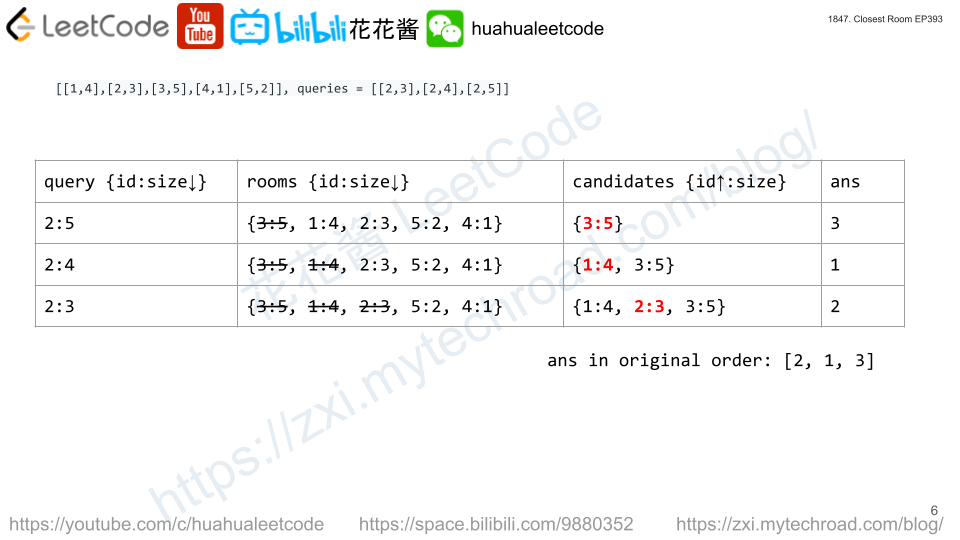You are given a 2D integer array intervals, where intervals[i] = [lefti, righti] describes the ith interval starting at lefti and ending at righti (inclusive). The size of an interval is defined as the number of integers it contains, or more formally righti - lefti + 1.
You are also given an integer array queries. The answer to the jth query is the size of the smallest interval i such that lefti <= queries[j] <= righti. If no such interval exists, the answer is -1.
Return an array containing the answers to the queries.
Example 1:
Input: intervals = [[1,4],[2,4],[3,6],[4,4]], queries = [2,3,4,5] Output: [3,3,1,4] Explanation: The queries are processed as follows: - Query = 2: The interval [2,4] is the smallest interval containing 2. The answer is 4 - 2 + 1 = 3. - Query = 3: The interval [2,4] is the smallest interval containing 3. The answer is 4 - 2 + 1 = 3. - Query = 4: The interval [4,4] is the smallest interval containing 4. The answer is 4 - 4 + 1 = 1. - Query = 5: The interval [3,6] is the smallest interval containing 5. The answer is 6 - 3 + 1 = 4.
Example 2:
Input: intervals = [[2,3],[2,5],[1,8],[20,25]], queries = [2,19,5,22] Output: [2,-1,4,6] Explanation: The queries are processed as follows: - Query = 2: The interval [2,3] is the smallest interval containing 2. The answer is 3 - 2 + 1 = 2. - Query = 19: None of the intervals contain 19. The answer is -1. - Query = 5: The interval [2,5] is the smallest interval containing 5. The answer is 5 - 2 + 1 = 4. - Query = 22: The interval [20,25] is the smallest interval containing 22. The answer is 25 - 20 + 1 = 6.
Constraints:
1 <= intervals.length <= 1051 <= queries.length <= 105intervals[i].length == 21 <= lefti <= righti <= 1071 <= queries[j] <= 107
Solution: Offline Processing + Priority Queue
Similar to 花花酱 LeetCode 1847. Closest Room
Sort intervals by right in descending order, sort queries in descending. Add valid intervals into the priority queue (or treeset) ordered by size in ascending order. Erase invalid ones. The first one (if any) will be the one with the smallest size that contains the current query.
Time complexity: O(nlogn + mlogm + mlogn)
Space complexity: O(m + n)
C++
|
1 2 3 4 5 6 7 8 9 10 11 12 13 14 15 16 17 18 19 20 21 22 23 24 25 26 27 28 29 30 |
// Author: Huahua class Solution { public: vector<int> minInterval(vector<vector<int>>& intervals, vector<int>& queries) { const int n = intervals.size(); const int m = queries.size(); sort(begin(intervals), end(intervals), [](const auto& a, const auto& b){ return a[1] > b[1]; }); vector<pair<int, int>> qs(m); // {query, i} for (int i = 0; i < m; ++i) qs[i] = {queries[i], i}; sort(rbegin(qs), rend(qs)); vector<int> ans(m); int j = 0; priority_queue<pair<int, int>> pq; // {-size, left} for (const auto& [query, i] : qs) { while (j < n && intervals[j][1] >= query) { pq.emplace(-(intervals[j][1] - intervals[j][0] + 1), intervals[j][0]); ++j; } while (!pq.empty() && pq.top().second > query) pq.pop(); ans[i] = pq.empty() ? -1 : -pq.top().first; } return ans; } }; |


